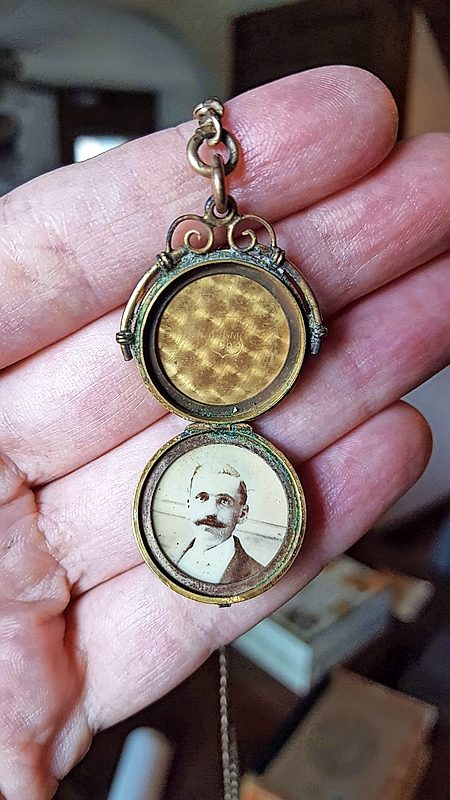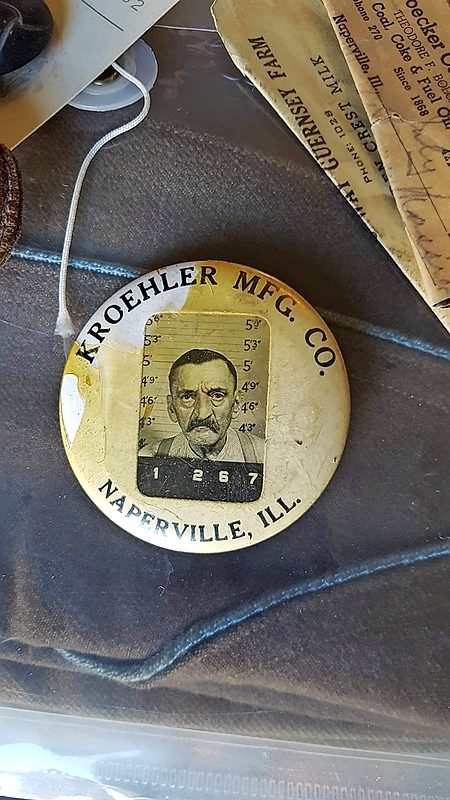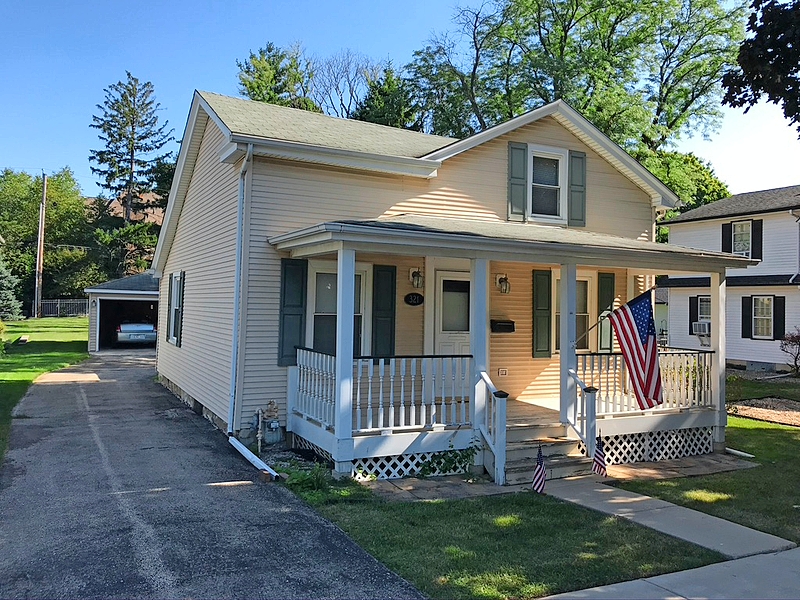history revealed
By Naperville Magazine
May 2021 View more Kudos

By Suzanne Baker
The bits and pieces of World War II hero Arnold “Arnie” Massier’s life will be preserved in Naperville—and perhaps around the country—rather than end up in a landfill.
When Massier died at age 97 in February 2020, neighbor Jennifer Reichert became executor of his estate, including his home at 321 West Franklin Avenue, which is suspected to date to the late 19th century.
Reichert said when she was planning to sell the historic house, she couldn’t bear to see it demolished and hauled away to a dump. She contacted Blue-
Earth Deconstruction to dismantle it so its contents can be preserved or reused.
BlueEarth focuses on taking apart buildings piece by piece and saving the cabinets, windows, doors, hardwood floors, mechanical systems, appliances, lighting and plumbing fixtures, plus lumber from the frame, said director of operations Colleen Feeny. Often up to 90 percent can be salvaged and reused.
A built-in hutch, the home’s front door, and all of Arnold Massier’s possessions are going to Naper Settlement and will be included in an upcoming exhibit on World War II and future exhibits at the Naperville museum. Other materials from the house will be sent to Rebuilding Exchange in Chicago, a nonprofit reuse warehouse for building materials.
BlueEarth Deconstruction owner Steve Filyo said his company has worked on plenty of old houses and barns. “This place, it stands apart from every single one. It is built differently than any building we’ve ever seen,” Filyo said.
As an example, Filyo points to the three- and four-inch timber that makes up the walls. “This just looks like it was made where they cut down the trees right there,” he said.
Lumber with the bark still on it can be seen in parts of the walls and in the basement. “The lumber is probably the most interesting part of the house as far as the reclaim,” Feeny said. “There are approximately 75 trees worth of lumber in Arnie’s home that were likely cut down around 1880 or so.”
Furniture makers love old-growth wood, she said, because it’s harder and it doesn’t expand and contract like the new wood found in a lumberyard. Older wood is in limited supply so there’s a lot of value in it, she said.

“None of this will sit in a warehouse,” Feeny said. “I would be surprised if it goes into the store to get sold, that they don’t sell it within a week.”
Reichert said it would only be fitting to have lumber from the home recycled as furniture since Massier and his father and brother worked as furniture makers at Kroehler Manufacturing, which was once Naperville’s largest employer and, in the 1940s, the second-largest furniture maker in the United States.
She said she wished each furniture piece could include a bit of history for the new owners. “One day they’re going to be sitting there drinking a beer, and they’re going to have no idea that their coffee table used to be the ceiling of a room of people who used to live here,” Reichert said.
Reichert said she was saddened to watch older homes in Naperville get torn down over the years.
“I grew up in this neighborhood. After Arnie’s house is taken apart, the only original house on the block is going to be my mom’s house next door,” she said.
Massier always was fascinated to see the homes he once watched being built eventually come down, Reichert said.
“Arnie would just watch the claw come down the street and say, ‘There goes another one. There goes another one,’ ” she said.
She also recalled him saying, “I remember when Mr. Jones went out and he cut that tree. He made that fireplace mantel, and can you believe that they’re just putting on the dumpster?”

That is when she knew the Massier house could never fall victim to the same fate.
Reichert said she made sure the property buyers were on board with deconstructing the house, and they plan to incorporate a beam from the home into the fireplace mantle of the new house they’re going to build.
“This should happen all the time. Every single house that goes down in this neighborhood should be deconstructed,” she said. “This house has more than 70 old-growth trees in it. If you think of all the neighborhood houses that went down, you’re talking about the entire forest. That is irreplaceable,” Reichert said. “That type of soil doesn’t exist anymore. Those water conditions, those air conditions, the way that those trees grew cannot happen anymore.”
This story originally appeared in our sister publication, the Naperville Sun, and is reprinted with permission.
Photos courtesy Jennifer Reichert and Blueearth Deconstruction


